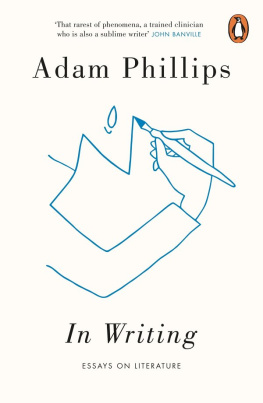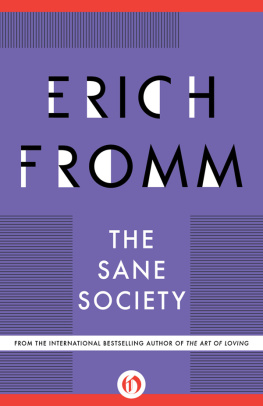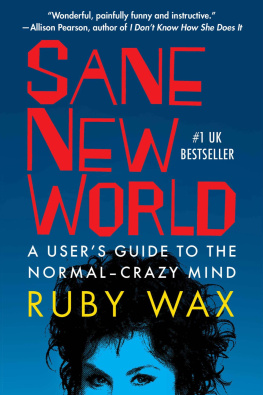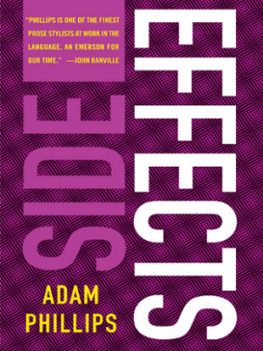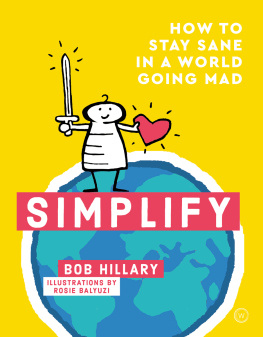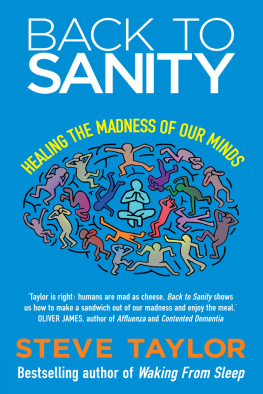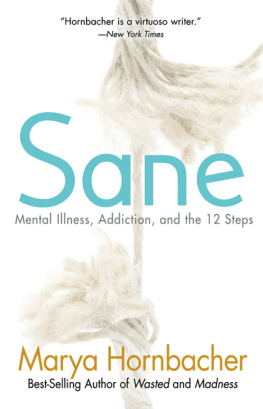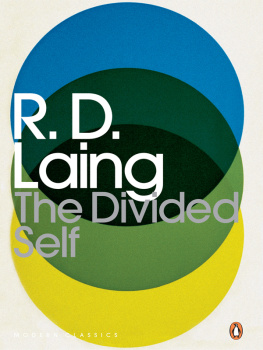if, by some mischance, people understood each other, they would never be able to reach agreement.
When the press reported in 2003 that a US court of appeal [ sic ] has ruled that a death row prisoner be forcibly treated for psychosis which would make him sane enough to be executed ( Guardian, November 2) no one reading the report would have been too baffled by the intended meaning. Charles Singleton, the report continued, who stabbed a shopworker to death in 1979, believes his prison cell is possessed by demons, that a prison doctor implanted a device in his ear and that he is both God and the supreme court.
Sane enough to be executed presumably means, in this context, sentient enough, responsible enough, guilty enough to experience the punishment as punishment rather than as something else; if Singleton does believe that he is God and the Supreme Court, he could, for example, see himself as having taken justice into his own hands, as having redeemed himself. His sanity, should the treatment work, would be reflected in his being more in touch with consensual reality; able to acknowledge both what he had done, and that what he had done was punishable. In an extreme case such as this, the madness being referred toSingleton was diagnosed as a paranoid schizophrenic in 1983seems no more contentious than the sanity that is being appealed to. And yet the phrase sane enough to be executed serves to remind us just what we might lose if the word sanity no longer made sense to us. It gathers up, in its own furtive way, a vast number of mostly tacit preferences and assumptions, of prejudices and ideals about what we think we should be, or should be like when we are at our best. It also assures us at the same time that there is a we that exists by virtue of its commitment to this value (we know what the phrase sane enough to be executed must mean): that we can be agents of intentions and motives that can be understood by others and ourselves; that we can take responsibility for our actions and their (often unknowable) consequences; that we can consent to being governed by certain laws and rules and regulations; that we can be realistic about our needs, and meet them without doing too much harm to other people. This might be the kind of sanity that Singleton needs in order to be properly executed. But it is rare, as we shall see, for sanity to be defined; more often than not it is referred to without its meaning ever being spelled out. Charles Singleton may be psychotic, a paranoid schizophrenic, but what would it really mean for him to be sane enough to be executed?
A WORD WITH few synonyms, sanity has always been an unfashionable term that has never quite gone out of fashion. First used by physicians in the seventeenth century to refer to health in body and mind, its more familiar modern connotation as the opposite of or antidote to madness only really developed, as we shall see, in the nineteenth century. It was a word taken up by the new mind-doctors and mental hygienists, but never systematically studied or defined. Even though people never collected examples of it, or scientifically researched it, or found it in foreign countries; even though it was rarely described, unlike madness, with any great gusto or commitment, and as a word was (and is) rarely found in poems, titles, proverbs, advertisements or jokes; even though it is a word with virtually no scientific credibility, and of little literary use, it has become a necessary term. Exactly what it has been necessary forand indeed what, if anything, it might be necessary for in the futureis the subject of this book.
By the late 1970s, when I began my psychoanalytic training, the glamorization of madnessthe promotion of madness as revelation, as political protest, as the higher sanitywas rarely spoken of. The antipsychiatrists of the 1960s, with their commitment to therapeutic communities rather than mental hospitals, and their understanding of mental illness as existential crisis rather than malingering or neurological disorder, had seen madness as a quest for personal authenticity. Their therapeutic project was not to get people back to normal, but to show them how the need to be normal had driven them crazy. But the libertarian hopes of these radical therapists, like so many of the fresh hopes of the 1960s, proved to be short-lived. A decade later, and the casualties of the antipsychiatry movement were often more vocal, and more poignant, than its defenders. What the antipsychiatristsmost notably R. D. Laing and David Cooper in practice, and Michel Foucault and Jean-Paul Sartre in theorywere rightly promoting was that the so-called mad had something to say, and that it was worth listening to and taking seriously. Instead of incarcerating disturbing people in diagnoses and institutions, they suggested that we should start wondering where we had got our ideas about normality from. The very word mad needed to be rescued from the cruelty that was invested in its pejorative connotations. The villains of the antipsychiatry world-view were those all too scientific psychiatrists who were committed to the militant cure and control of anyone who behaved frighteningly badly; the heros and heroines were those who took the mad on their own terms, and who understood the language of the mad as anguished, accurate personal (and therefore political) history. The question was: who is most worth listening to, the experts on insanity or the insane themselves? And, of course, what is it that the insane are equipped to tell us aboutthe human condition (albeit at its most extreme) or just the experience of the unlucky few? For the antipsychiatrists there was no them-and-us: everyone was in a certain sense mad. For the often demonized psychiatrists there were the sane and the mad, and they could tell the difference. That, in effect, was what a psychiatrist was: someone who could tell the mad from the sane.
What the psychiatrists and the antipsychiatrists of the 1960s and 1970s had acknowledged in their quite different ways was that there is a tremendous fear in our culture about madness. But it is striking, in retrospect, that there has been no particular enthusiasm for the idea of sanity. Erich Fromms The Sane Society (1956) was more of an elegy for the possibility of sanity in capitalist societies than anything else. R. D. Laing and Aaron Estersons classic Sanity, Madness and the Family (1964) was entirely about how certain kinds of family life drive people crazy; Thomas Szaszs celebrated The Myth of Mental Illness (1960) had little to say about whether there is a comparable myth of mental health. And even the voluminous literature on child development that came after the trauma of the Second World War had no interest in the childs sanity per se; the focus as ever was on pathology, on what could go wrong in a childs life, and how to recognize it. There were many competing accounts of what it meant for a life to go wrong. But the sense you would get from reading most of the so-called professional literature, as I did then, was that, for more and more people, life didnt work. Both the apocalyptic fervor of the antipsychiatrists and the sober, supposed realism of the scientists combined to make the whole notion of sanity seem somehow irrelevant. There was too much unhappiness, too much madness to talk about.
Most of the parents I saw as a child psychotherapist working in schools, hospitals and child-guidance clinics in the 1970s and 1980s were worried that their children, whatever their symptoms, were in some way mad; and virtually all the adolescents I saw believed they must be going mad to be feeling as they did. This was true across all classes and generations. It was as though any unintelligible kind of suffering was the first sign of a madness that was always looming; that people had come to believe in their potential to be mad. Clearly, the controversies of the 1960s and 1970s about psychiatry and the nature of mental illness were as much about the modern fear of madnessboth what might be done about that fear, and what that fear might be a fear ofas about its definition. It is a strange irony that even though madness has terrorized us more now than ever beforeor perhaps because it haswe have been unable to give persuasive accounts of what sanity might be, and why it still might matter to us. This book is an attempt to reopen our account.




